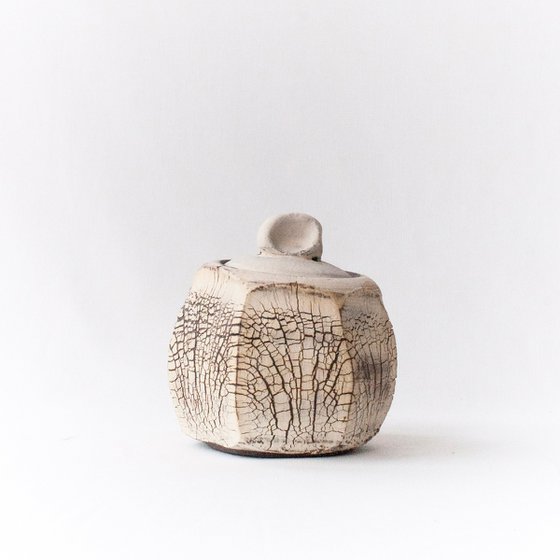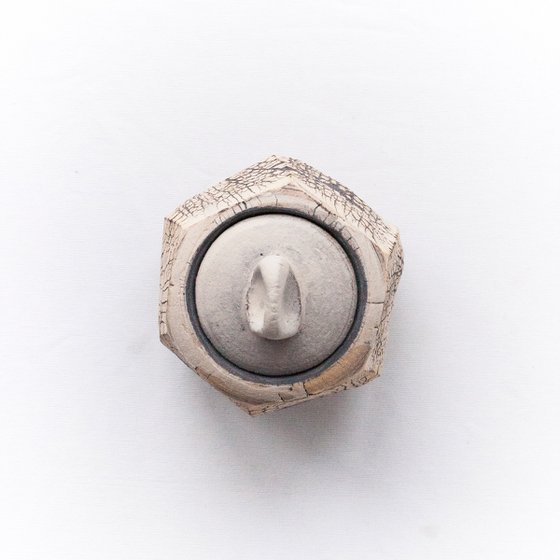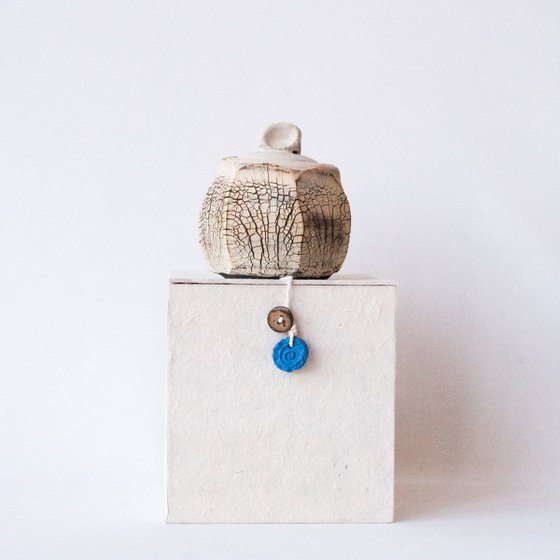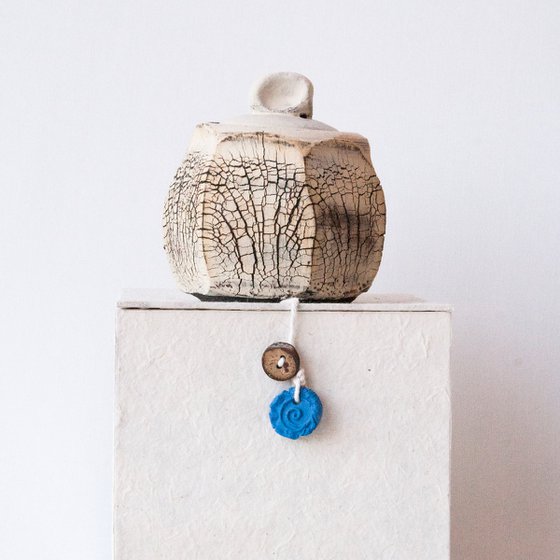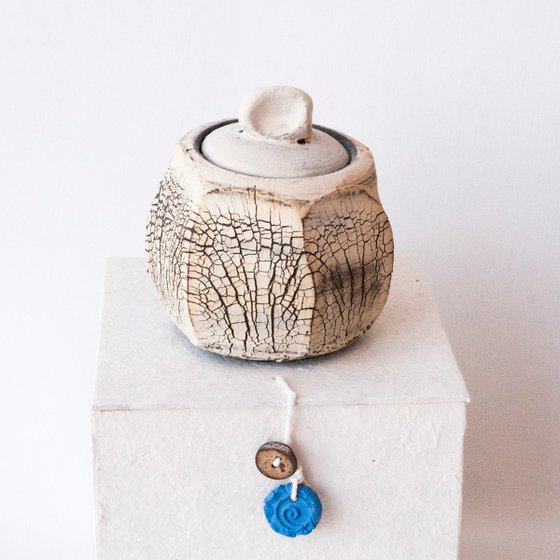Main Navigation
Original artwork description:
This little vessel is made using a very interesting technique.
After throwing the little pot with black stoneware clay on the potter's wheel, I cut it with a wire into a polygonal shape. I then cover the small pot with a layer of white slib and leave the pot open for a while until the surface is no longer damp.
Now I use the brush to apply a thin layer of water glass to the surface of the polygonal vessel on top of the white slib, and again leave it open for a while so that the water glass can dry a little. The water glass, as it were, seals the surface of the vessel, creating the striking, coarse crackle during the final step on the potter's wheel.
Now comes the most exciting moment, when I carefully enlarge the pot's belly on the potter's wheel from the inside out. The pot should now no longer be touched from the outside. Otherwise, the surface will be damaged, which breaks open beautifully during the throwing process.
For the lid of the jar, the technique with the water glass is not suitable. It is thrown upside down and with the opening facing upwards on the potter's wheel, and then trimmed off in a round shape. On top, a small amount of clay as a handle and with the white slib as a coating, the lid gives the small artwork the finishing touch.
Materials used:
black and white clay
Sugar Cube (2023) Clay sculpture
by Johanna Braeunlich
9 Artist Reviews
£298.79
- Clay sculpture on Other
- One of a kind artwork
- Size: 9 x 10 x 9cm
- Signed certificate of authenticity
- Style: Unspecified
- Subject: Architecture and cityscapes
Loading
Original artwork description
This little vessel is made using a very interesting technique.
After throwing the little pot with black stoneware clay on the potter's wheel, I cut it with a wire into a polygonal shape. I then cover the small pot with a layer of white slib and leave the pot open for a while until the surface is no longer damp.
Now I use the brush to apply a thin layer of water glass to the surface of the polygonal vessel on top of the white slib, and again leave it open for a while so that the water glass can dry a little. The water glass, as it were, seals the surface of the vessel, creating the striking, coarse crackle during the final step on the potter's wheel.
Now comes the most exciting moment, when I carefully enlarge the pot's belly on the potter's wheel from the inside out. The pot should now no longer be touched from the outside. Otherwise, the surface will be damaged, which breaks open beautifully during the throwing process.
For the lid of the jar, the technique with the water glass is not suitable. It is thrown upside down and with the opening facing upwards on the potter's wheel, and then trimmed off in a round shape. On top, a small amount of clay as a handle and with the white slib as a coating, the lid gives the small artwork the finishing touch.
Materials used:
black and white clay
14 day money back guaranteeLearn more
